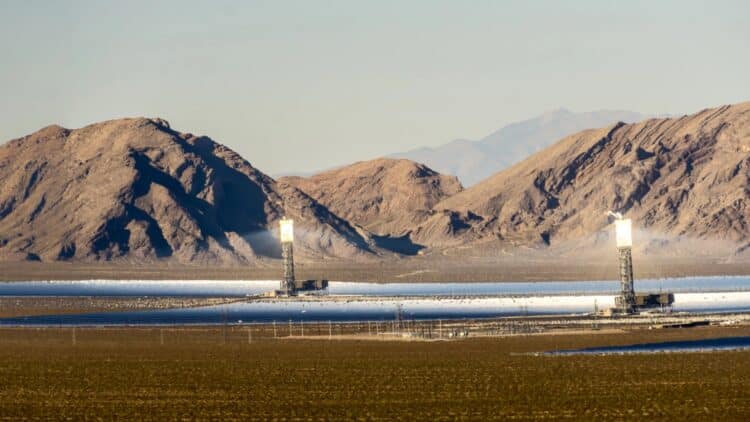Ivanpah Solar Electric Generating System, which is a massive plant in California and which includes 173,500 computer-manufactured mirrors that occupy five square miles of the Mojave Desert, is also scheduled to be closed in 2026 after slightly more than ten years of operation. It is a colossal re-invention of the fortunes of the taxpayers who had spent 1.6 billion in federal loan guarantees to construct a 2.2 billion construction project to build concentrated solar power technology, because less expensive photovoltaic solar panels have rendered the technology unnecessary.
The concentrated solar technology is a victim of innovation
Construction of the Ivanpah Solar Electric Generating System began in 2010, and it began operating in 2014, the construction cost of which was 1.6 billion dollars, accompanied by the loan guarantees of the U.S. Department of Energy. Ivanpah is unique in its application of the complicated structure where 173500 computerized mirrors (so-called heliostats) are used to reflect the rays of the sun onto a receiver at one of three towers.
The development of the industry and the rapid decline in the price of the traditional solar panels have turned the Ivanpah system into an unprofitable one, to the dismay of the plant and its operator, NRG Energy. In early 2025, the primary buyer of the energy from the plant, PG&E, stated that it would cancel its contract with NRG to save money for its clients, who were initially going to buy power until 2039. This is approximated to have killed 6,000 birds in a year, as they fly through the mirrors and the towers, because the quantity of heat generated by the mirrors is tremendous.
Mirror technology is being phased off as a result of the photovoltaic revolution
In the last 15 years, the price of photovoltaic solar power has dropped by approximately 70 percent and, therefore, is much less expensive compared with the energy produced by Ivanpah. At the time of the opening of Ivanpah, the plant was the largest in the world, and there is a lot of potential in the technology of Ivanpah. The concentrated solar power technique is a process that entails heating a liquid to produce steam that is used to turn a steam turbine, hence producing power.
The power generation technique employed by the Ivanpah plant was once thought of as state-of-the-art, but now it can only be regarded as a remnant of a past era in the current development of solar technologies. The plant had the capacity to serve over 140,000 households over ten years, and this proved that the technology was viable despite its financial deficiency.
Redemption can be achieved through future repurposing
Although the company has not formally announced any plans as to what they intend to do with the plant once it is decommissioned, the owners of the plant, which are NRG Energy, have indicated that the area may be reused by a less-expensive and more-efficient photovoltaic system. This would be the industry standard of producing solar energy, and this might save something of the huge desert installation.
Investment by the taxpayer is varied
The answer to the question of whether Ivanpah is a failure, or not, seeks to be judged based on the viewpoint, that is, whether the scale of hype and activism warrants consideration, as suggested by the former director of the Loan Programs Office, Jigar Shah. The plant was able to commercially deploy a concentrated solar technology in the US, although it did not trigger trillion-dollar investments like photovoltaic solar.
The fact that America has lost the $2-billion Ivanpah facility signifies technological advancement as well as waste of infrastructure in the renewable energy industry. Although the closure shows that the technology of solar panels has developed at a specific pace, making costly installations irrelevant, it also reveals the dangers involved in large-scale government spending on new technologies.
Disclaimer: Our coverage of events affecting companies is purely informative and descriptive. Under no circumstances does it seek to promote an opinion or create a trend, nor can it be taken as investment advice or a recommendation of any kind.


